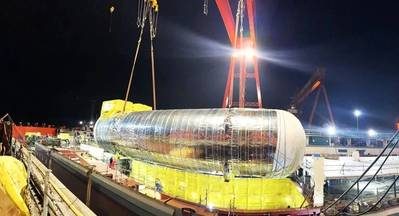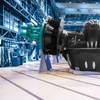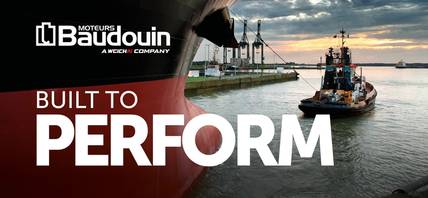Is There a Viable LNG to Ammonia Fuel Pathway?
Is LNG to ammonia a viable pathway for helping shipowners get to net zero?
From an engine point of view there is a pathway, but there are two points to consider, says Lars Tingbjerg Danielsen, Two-Stroke Promotion Manager – Newbuildings at Everllence. First, the case where an engine is capable of burning both methane and ammonia; second the case where an engine starts its service burning methane and then later switches to burning ammonia.
“If we look at the idea of an engine capable of burning both methane and ammonia, it is our belief that this is not a request from the market. Multi-fuel engines could at first glance appear to have multiple appealing points, but after a closer look it becomes evident that such an engine will in reality have multiple limiting factors resulting in an engine that will not be optimized for anything.
“To explain it in a graphic way, engine design and optimization can basically be considered like setting up a tent on a campsite: If you want to have the view of the lake, you can’t be close to the toilet buildings. If you further want to be far away from the ants, you can’t be close to the water tap. If you want peace and quiet, you can’t be close to the fireplace. If you won’t sacrifice any of these but want to be equally close to all, your only option is in a puddle of mud – compromising on everything and ending up in a less than ideal position overall.
“The same goes with engines: If you want all fuels, you have to obey to the limitations of each fuel even when operating on the other fuel, meaning you don’t maximize on any of the benefits, but suffer all of the downsides. This also applies elsewhere on the vessel: multiple fuels require multiple fuel tanks and fuel systems. This reduced cargo space onboard and drives up maintenance costs. Crew members and shore staff will have to master all fuels and technologies which will make them very difficult to find and thereby costly.”
Starting with methane and then later burning ammonia is another story. “Today all of our engines are designed with consideration on how they can be optimized later on. This also includes retrofit from one fuel to another. The basic engine structure of our latest engine technology is the best example. More than 95 % of the components on the engine will be the same regardless of fuel. Parts like engine frame, cylinder frame, crank shaft, pistons, exhaust valves, exhaust manifold, gear wheels and so on are all the same, regardless if it as engine burning conventional fuel or any kind of “future fuel”.
Facilitating an engine designed for e.g. methane to burn ammonia during some point of its time in service is therefore possible, simply by replacing some parts and adapting fuel tanks and handling systems onboard. We see this approach already now, with some first-movers.”
One such early mover was Höegh Autoliners when, in 2023, the company installed the first DNV-approved LNG/ammonia tank on its first Aurora Class newbuild.
Considerations for the adoption of ammonia extend beyond technical considerations onboard. Caspar Gooren, Commercial Director Renewable Fuels, Titan Clean Fuels, takes a bunkering perspective, saying: “While a combination of LNG and ammonia is technically feasible, shipping needs realistic solutions today. For ammonia, practical progress must still be made on last mile infrastructure, regulations, and safety standards to expand to the scale required.
“It would take at least 5-7 years to achieve remotely adequate scale on bunkering infrastructure and significant investments would be needed in production and storage, including the development of e-ammonia equipment. That requires long-term commitments, which, in turn, require more regulatory and return on investment certainty.”
Gooren says when discussing any fuel, including ammonia, it’s important to say grey, green or blue because grey ammonia, the direct counterpart to grey LNG, actually emits higher well-to-wake emissions than fuel oil. LNG is unique because its grey version offers immediate GHG emissions reductions.
“Combining green, or even blue ammonia, plus LNG and bio-methane (LBM), this could be a technically viable route to decarbonisation. Blue ammonia could cut CO2 emissions if combined with carbon capture & storage (CCS) and that would be cheaper than green ammonia for now, but it depends on the costs of LBM, CO2 emissions, and CCS. The major advantage would be the ability to use some of the established LNG infrastructure, significantly reducing investment barriers and costs.”










